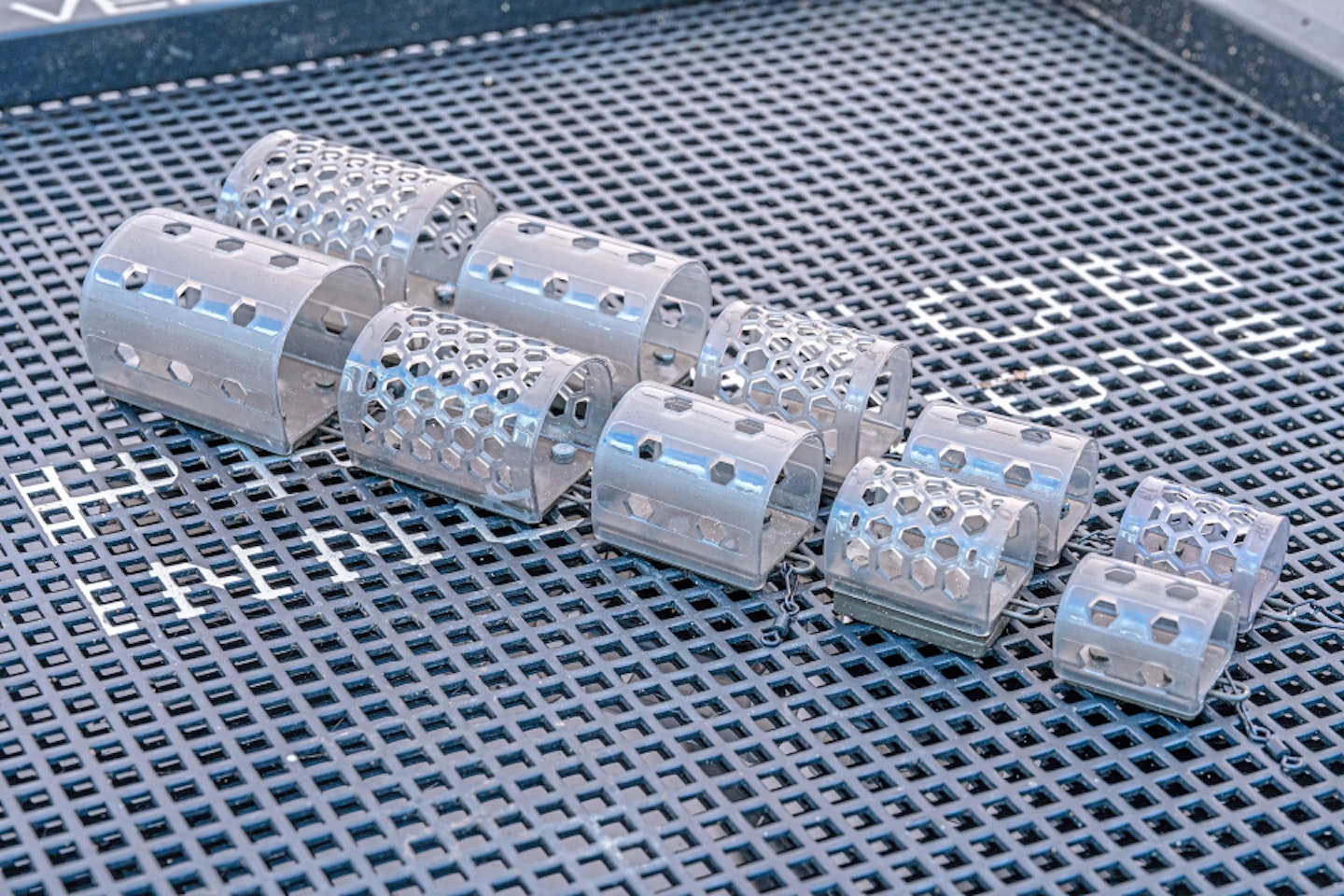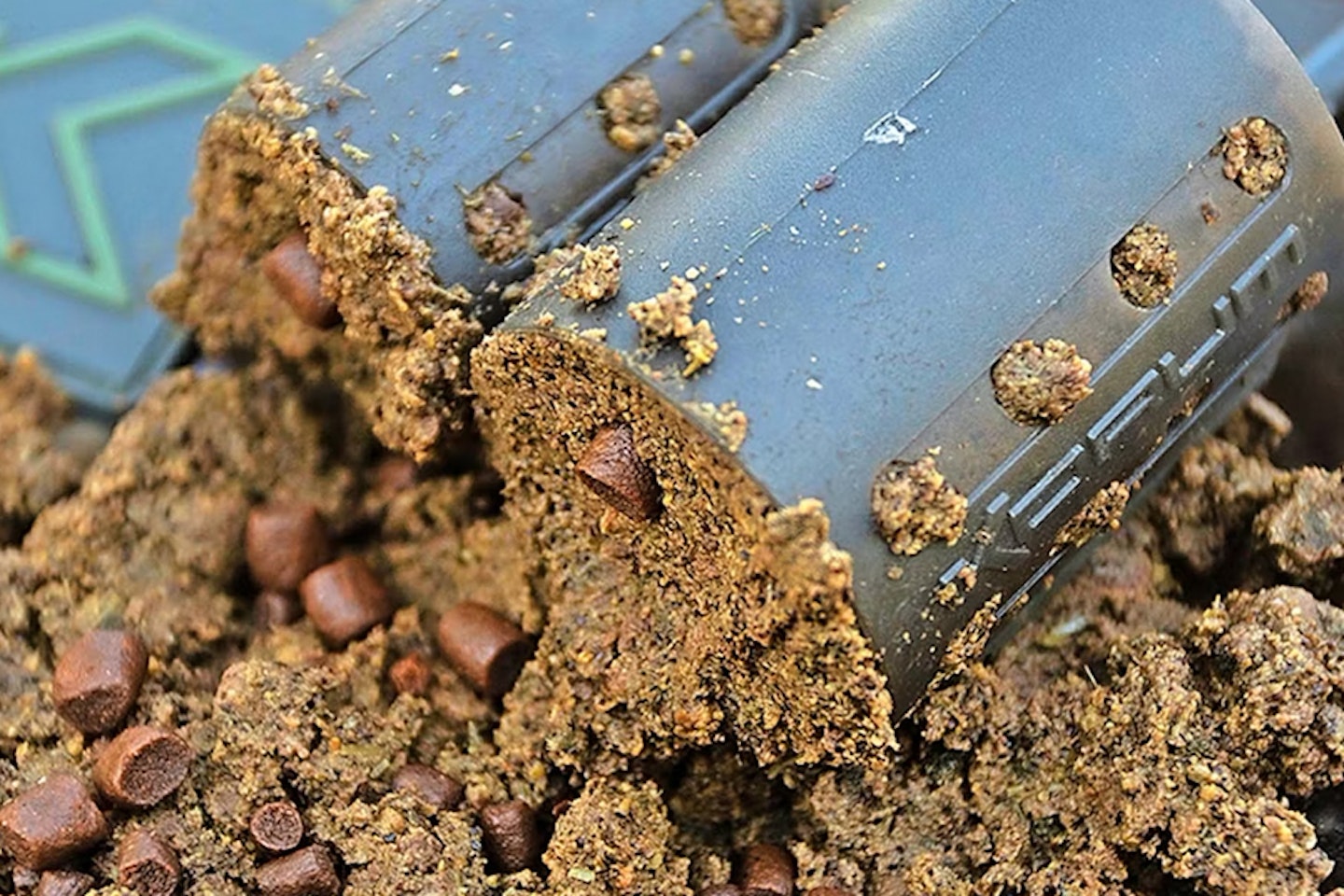Feeder fishing on a river shares many similarities with feeder fishing on stillwaters, but the flow of rivers presents unique challenges that may require slight adjustments to your terminal tackle to be able to fish effectively.
If you don't get things right you will be very quickly put-of fishing as you see your feeder trundling off downstream leading to all kinds of frustration. However, with the excellent tips in this article you will be ready to sample some of the superb fishing rivers have to offer!
WANT TO GET STARTED RIVER FISHING? OUR BEGINNER GUIDE WILL GET YOU OFF ON THE RIGHT FOOT.

This straightforward yet highly effective feeder fishing rig is perfect for targeting river species such as barbel, chub, and bream. It is easy to assemble and can be adapted to various water conditions, ranging from deep, slow rivers to shallower, fast-flowing streams. The beauty of this rig lies in its versatility; with the right bait and loose feed, it can attract all larger river fish.
To set up this rig, you'll need a variety of feeders weighing between 2oz (60g) and 6oz (180g), a robust mainline of 10lb (0.28mm), a strong size 12 hook, a swivel, and stop bead. Stop beads are small rubber sleeves designed to fit over half of a swivel. They help prevent the swivel from hitting knots, which can compromise its strength.
THE BEST SPECIMEN RODS ARE A GREAT CHOICE FOR RIVER FISHING, SEE OUR BUYERS GUIDE.

A key, often technical aspect is selecting the right feeder weight. An open-end feeder is vital, as cage feeders release their groundbait too quickly, risking being washed downstream along with the fish, while open-end feeders hold onto the bait longer until it reaches the bottom.
Finding the right feeder weight will involve some trial and error. Choose a feeder that you believe will anchor well in the current, cast it out, and check that it remains stationary on the bottom without feed in as you still don't want it to move once empty. Ideally, you want a feeder that holds its position in the flow but can shift easily if a fish nudges the bait.
OUR HELPFUL HINTS AND TIPS GUIDE TO IMPROVE YOUR RIVER FISHING IS A MUST READ.

The bait options for this rig are virtually limitless, and adjusting the hook length between a standard hook and a hair rig will allow you to present the bait differently based on the fish's feeding behavior. If you are getting a lot of taps and bangs on the rod tip, it is often fish hitting the feeder and shortening your hooklength will see you get proper bites.
For hair rigs, effective choices include halibut pellets, fishmeal boilies, sweetcorn, and luncheon meat, as bream, barbel, and chub often favour these baits. Alternatively, switching to a standard hook to use maggots, worms, or casters can also yield great results.
It's crucial to introduce loose feed through the feeder. If you're using halibut pellets or fishmeal boilies on a hair rig, pairing them with fishmeal groundbait and pellets in your feeder will yield optimal results. However, if you're using maggots, worms, or casters, it's essential to incorporate these into your groundbait mix.
IF YOU ARE ON A BUDGET, CHECK OUT OUR GUIDE TO FREE RIVER STRETCHES YOU CAN FISH.

Subscribe to Angling Times magazine today. Choose a Print+ Subscription and you'll get instant digital access and so much more. PLUS FREE UK delivery.
